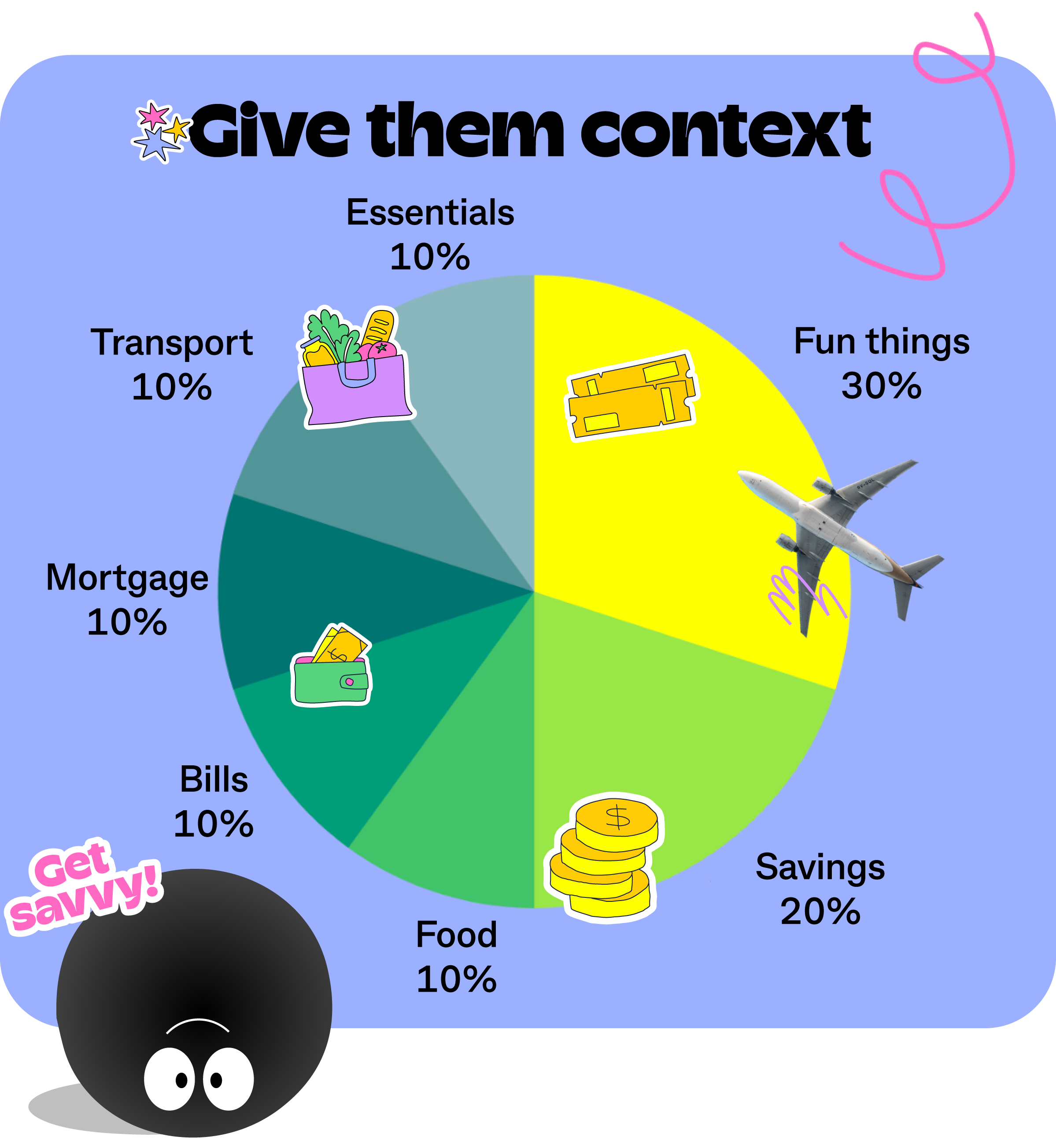Being a parent can require you to dig into your deepest reserves of patience and creativity. You become a professional question-answering machine, not to mention an award-winning story inventor… ah yes, you should eat your carrots because they give you superhero night vision (obviously).
But what happens when the answer you give your kid actually matters, and you can’t give them one? Maybe you don’t know the answer, or don’t know how to deliver it in a way they’ll understand. Or maybe you don’t want to give it? Welcome to the world of awkward money conversations.
Most money questions require you to know a topic intimately, tear it apart and reframe the answer in a way that makes sense to your kid. And then! Don’t forget to bubble wrap your answer to protect your kid’s sense of security and waterproof it to avoid leakages into playground conversation.
We interviewed over 2,000 Aussie parents, guardians and caregivers of children aged 8-17 about the convo topics that make them cringe. Here are the top 5 money topics Aussie parents avoid talking about, and Kit’s two cents on how you can breeze through them.
In fifth place: 'The need for instant gratification'
You’re in the Supermarket, running the gauntlet en route to the till. Chocolate to your right, chips to your left, a hungry child in tow. What do you say when your kid loudly professes that they want a kinder surprise? How do you teach delayed gratification when the theory is so much harder in practice?
Our two cents? Teach your kid that a ‘no’ today, means a much cooler ‘yes’ tomorrow. Work with your kid to pin down something really cool to save towards (tomorrow’s yes). From there, your job is simply to be their friendly reminder when it comes to saying no today and asking the tough questions.
“Remember kiddo, if you spend $4 on this kinder today, you won’t be able to get that $20 lego set you’ve been saving for so well. Why do you think having the kinder surprise now is more important?”
Teach your kid that a ‘no’ today, means a much cooler ‘yes’ tomorrow.
Meet their answers with thought provoking questions, and if you’re met with the genius idea that YOU can sponsor the chocolate… remind your kid that just like them, you’ve got savings goals too!
Discipline is tricky to teach, it must be learnt. So, give your kid something to save for, and focus on that goal-hitting feeling. If you're up for it, try the marshmallow experiment!
Coming Fourth: 'Why you can’t afford certain things'
Let’s set the scene.
At dinner, your kid asks you if your family can visit Italy in the school holidays. School holidays are 3 weeks away, so the answer is a definitive no. After dinner, your kid approaches you privately and earnestly asks “do we not have enough money?’”
Regardless of the reason, it’s a tricky answer to navigate. Your response to a question such as this plays a role in shaping their social identity. It adds a formative piece to their money mindset and impacts how they will interact with money for the rest of their lives.
What to do? Reframe the concept of 'not being able to afford' as 'choosing not to spend'.
Use the opportunity to explore the decision making which guides your spending. For example, choosing not to spend on Italy this month because you want to save for a trip next year to visit their grandparents. Or saying no to international travel because you prefer to support local Aussie businesses and rural communities.
This is a great chance to explore what values and passions are important to your kid and find examples of how they could align their spending.
Explore what values and passions are important to your kid and find examples of how they could align their spending.
In Third: 'The Value of Money'
Instilling appreciation for the value of money, while not scaring your kid into life-long spending guilt is a thin tightrope to balance on. As your kid ventures through life, how they value and view money will evolve. However, here are a few ways to instil basic appreciation and understanding.
First, give your little grownup a few different pairs of shoes to step into; explore how money is valued from these perspectives. How might someone who had lots of money growing up value it compared to someone that didn’t have all that much? How might someone who earns more value it compared to someone who earns less?
Next, explore what a dollar can buy you around the world. Explore how different people and communities perceive and value money. The dollar coin that buys your kid their canteen snack, is another person’s entire daily income. How do these two different people value that dollar?
You can give your kid examples and perspectives to lean on, but the next step from here? In the words of Kit, learn by doing! Get your kid a Kit card and have them earn, spend, save (and value) their own dollars! Experience truly is the best teacher when it comes to understanding and appreciating the value of money.
Experience truly is the best teacher when it comes to understanding and appreciating the value of money.
Second place: The cost of living
“Hey Mum, Dad, how much did our house cost? How much money do we spend on food? How much was our trip to Bali?”
Giving exact numbers about your wealth or spending can be confronting! You can already hear your favourite school yard parent repeat to you what Johnny told Mary told Sam told them about what you spent on your week at a Balinese villa.
Instead of being literal, try breaking it down into percentages! Show them the big picture of earning and spending – putting colour behind the percentages. Your kid likely craves context, rather than precise calculations.

Another approach is to discuss the specific inputs into your spending. Rather than a large dollar figure, give them the breakdown. If your kid really is after the numbers, this gives them the opportunity to research and patch it together with detective work!
Whether you give percentages, numberless inputs, or real figures, the key is to understand the intention behind the question. In some cases, number transparency might be the most appropriate approach to take.
Taking the Crown: Cryptocurrencies & NFT’s
Cryptocurrencies & NFT’s, the most avoided conversation topic by Aussie parents. But not just parents – most financial experts are also reluctant to give their two cents on the topic, as there are still so many unknowns.
So, what to do? We think this conversation gives you two opportunities.
Firstly, it’s a great chance to explain the dangers and possibilities of new financial opportunities popping up. Use NFTs to explain the kind of questions you would ask before interacting with new products.
- Is this just the latest trend?
- How risky is this new product, and how safe is my money?
- What kind of track record does this new product have?
- What do the experts think?
- Can I afford to lose the money I invest in testing this new product?
- Who can be held accountable if things go wrong?
Secondly, use the opportunity to show your kid the art of researching. Go explore NFTs with them! There’s nothing quite as powerful as admitting you might not know the answer but are willing to learn.
Bringing it all together
Hard money questions can be confronting and awkward. Yet, within each, lies an opportunity to enrich your child’s perspective on their world of money.

Consider the PDS, FSG, TMD and other important information at heykit.com.au/legal. Any advice given is general in nature and does not take into account your objectives, financial situation or needs so please consider whether it is appropriate for you.


